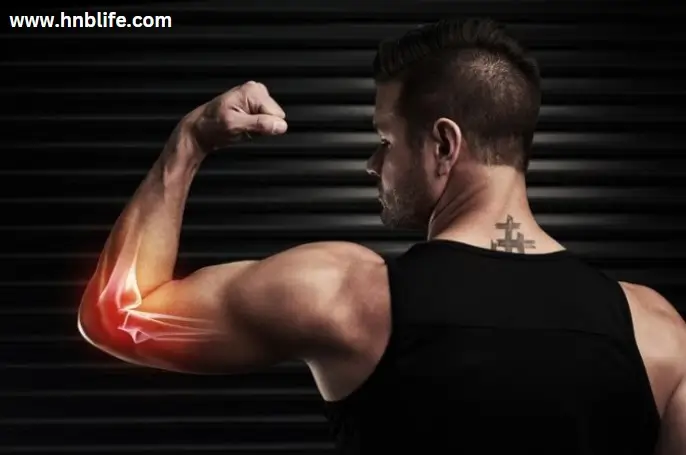Muscle loss happens when muscle tissue shrinks because of things like getting older or not working out enough. Loss of strength and movement can happen.
Our bodies naturally lose muscle mass as we age. This is called sarcopenia. This can get worse if you don’t move around much or eat enough energy. Some medical conditions, hormonal imbalances, and bad nutrition are some other things that can cause muscle loss.
Knowing what causes muscle loss and how it happens is important for coming up with ways to stop or reverse it. People can keep their muscle mass and general health in good shape by working out regularly, eating a diet high in protein, and seeing a doctor when they need to.
Muscle Loss
Muscle loss is a regular problem that can be caused by getting older, not being active enough, or some medical conditions. To keep from losing muscle, it is important to live a healthy life and do regular exercise, including strength training.
To keep muscles healthy, you also need to eat a varied diet that is high in protein and other important nutrients. Keeping yourself well-hydrated and getting enough rest are also important ways to keep your muscles from losing mass. Consulting with a doctor and a fitness expert can give you personalized advice on how to stop and deal with muscle loss successfully.
Maintaining muscle strength and function is possible with the right method, which is good for your health and quality of life as a whole.
Muscle Loss Symptoms
Weakness, less muscle bulk, and less strength are some of the signs that you may be losing muscle. People who are losing muscle may notice that they can’t do easy things as well as they used to or that they are harder to do than before. Losing muscle can also slow down your metabolism, which makes it harder to stay at a healthy weight.
Talking to a doctor is important if you think you might be losing muscle. They can help you figure out what’s causing it and provide the right treatment. People can possibly stop their muscles from breaking down even more and improve their general quality of life by taking action and addressing these symptoms as soon as they appear.
Can Muscle Atrophy Be Reversed
Muscle loss, which is also called muscle shortening, is something that a lot of people worry about. It may seem like once you lose muscle, you can never get it back, but there is hope. Over time, people can build back up their muscle mass and power by doing regular resistance training exercises.
For this process to work, you need to be consistent, and you should gradually make the exercises harder so that you keep seeing results. Also, making sure you eat a healthy, well-balanced diet that is high in protein is important for building and recovering muscles.
People can restore muscle atrophy if they work hard and do things the right way. This will help their muscles get stronger and more useful again.
Does Muscle Atrophy Hurt
A lot of people feel pain and difficulty when they lose muscle, which is also called muscle atrophy. This disease happens when muscles waste away because of not exercising enough, getting older, not eating enough, or some medical conditions. As muscles slowly get weaker and smaller, it can hurt, make it hard to move, and make you weak.
Muscle atrophy can sometimes affect functions inside the body, which can lead to more health problems. If you are losing muscle, you should see a doctor to find out what is causing it and come up with a treatment plan that will help ease your pain and stop the loss of muscle from getting worse.
Working out regularly, eating right, and getting the right kind of physical treatment can all help control and maybe even reverse muscle atrophy.
Muscle Atrophy
Muscle loss, which is also called muscle atrophy, is when muscle tissue gets smaller and weaker. This can happen for many reasons, such as not being active enough, getting older, or having certain medical problems. If you don’t use your muscles often or put them under stress, they can start to waste away.
This can make you tired, make it harder to move around, and even make it hard to do normal things. There are, thankfully, ways to stop or slow down muscle loss. power training and other forms of regular exercise can help keep muscle mass and power up. For healthy muscles, it’s also important to eat a varied diet with enough protein.
To keep muscles strong and active, it’s also important to avoid being inactive for long periods of time and do regular physical exercise. By following these steps, you can help keep your muscles from breaking down and keep them working at their best for as long as possible.
Muscle Atrophy Exercises
Muscle atrophy, which means muscle loss, can happen for many reasons, such as not being active enough, getting older, or having certain medical conditions. To stop or slow down muscle loss, it’s important to do exercises that work the muscles on a daily basis.
Lifting weights, doing exercises with your own body, and doing aerobic activities can all help you keep your muscle mass and power up. To keep the muscles challenged, it’s important to do these workouts consistently and build up the intensity over time. To help muscles grow and heal, it is also important to pay attention to what you eat.
A healthy diet and a well-balanced exercise routine will help you stop losing muscle and keep your strength and general physical function.
How Long Does It Take To Recover From Muscle Atrophy
The process of getting better after muscle decline can be different for each person. The amount of muscle loss, your age, and your general health can all affect how long it takes to recover. Usually, it takes a few weeks to a few months of regular exercise and good nutrition to get back the muscle mass you lost.
But it’s important to talk to a doctor or a trained fitness worker to make a personalized plan for your recovery. Important parts of the recovery process are doing muscle training, eating enough protein, and getting enough rest. Increasing the intensity of workouts slowly and focusing on specific muscle parts can also help build muscle mass again.
People who are trying to heal from muscle atrophy can do so by following these tips.
Overtraining
Overtraining can lead to muscle loss, which is a problem that a lot of fitness fans have. If you push your body past its limits without giving it time to rest and heal, your muscles may break down instead of grow. This could hurt your performance, make you more likely to get hurt, and generally get in the way of your exercise goals.
To avoid losing muscle and keep your workout schedule in balance, it’s important to know the signs of overtraining. To escape the bad effects of overtraining, it’s important to pay attention to your body, take enough rest days, and change how hard you train.
Recovery should be just as important as your workouts if you want to be successful in your fitness journey in the long run.
Overtraining Muscle Loss
Losing muscle because you train too much can hurt your fitness goals and health in general. Muscle tissue can break down when you push your muscles past their limits without giving them enough time to rest and heal. This can cause muscles to get weaker, last less time, and get smaller.
You should pay attention to your body and make sure you have enough time to heal between hard workouts. Making sure you get enough nutrition, taking rest days, and changing how hard you work out are all important ways to stop muscle loss caused by overtraining.
Remember that balance is important for keeping up a healthy exercise plan that you can stick with.
Calorie Deficiency
When the body doesn’t get enough food to do its job, muscle loss can happen. For example, not eating enough or doing too much physical exercise are two things that can make this happen. When you don’t eat enough calories, your body breaks down muscle tissue to get energy. This makes you lose strength.
Muscle loss can also be caused by not getting enough protein, since protein is needed to maintain and rebuild muscles. To keep from losing muscle, it’s important to make sure the body gets enough food and nutrients. A well-balanced diet and the right nutrition are important for keeping your health and muscle strength.
Talking to a doctor or nutritionist can help you figure out how many calories and proteins you need to keep your muscles from losing mass.
Calorie Deficit Diet For Fat Loss
Concerns about muscle loss can arise for people who want to lose fat by following a calorie reduction diet. If you cut back on calories to make a shortfall, your body may start using muscle tissue as a source of energy.
To avoid this, it is very important to follow three important rules. To begin, don’t start lines with words and phrases that are used a lot. Second, change the words or phrases at the start of each piece to keep the reader interested. Last but not least, don’t include a closing paragraph.
By following these tips, you can make your writing better and give useful information about calorie deficit diets that help people lose fat and keep muscle.
Too Much Cardio
Loss of muscle can be discouraging for people who want to get stronger and reach their exercise goals. It’s strange that too much exercise could be making this problem worse. Too much cardio without enough rest and healing time can break down muscle tissue, which stops muscles from growing.
Cardio is important for heart health and burning calories, but to keep muscle growth, you should also do a variety of strength training exercises. In addition to cardiovascular exercises, resistance training can help keep muscles healthy and improve body structure as a whole.
People can reach a good balance that helps both cardiovascular fitness and muscle growth by doing a mix of cardio and strength training. So, the next time you go to the gym or start a fitness plan, remember to find the right mix between cardio and strength training to keep your muscles from losing mass and get the results you want.
Too Much Cardio Muscle Loss
If you do too much exercise, you may lose muscle, which can hurt your fitness goals. When you do too much cardio, your muscles can break down, which slows down your progress in building and keeping muscle mass. To keep your muscles from losing mass, you should do a mix of cardio and power training.
Adding resistance exercises to your workout routine can help you keep your muscle mass and stop breakdown. Improving your protein diet and getting enough rest are also very important if you want to keep your muscles while doing cardio. Keep in mind that too much exercise can hurt your muscles, and to avoid losing muscle, make sure you follow a well-rounded fitness plan that includes both cardio and strength training.
Frequently Asked Questions On Muscle Loss
How Does Muscle Loss Occur?
What Are The Effects Of Muscle Loss?
Can Muscle Loss Be Prevented?
How Can I Regain Muscle Loss?
Does Muscle Loss Affect Metabolism?
Conclusion
Doing strength training workouts regularly and eating enough protein are important ways to keep muscles from losing mass. You can lower your risk of losing strength as you age by eating well and taking regular walks. Do not forget how important it is to eat well and exercise regularly to keep your muscle mass and health in general.





Leave a Reply